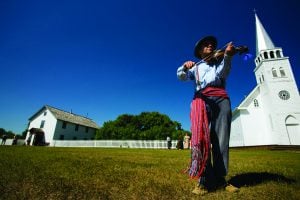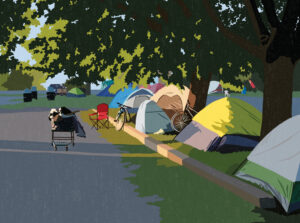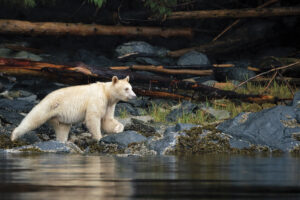
People & Culture
Kahkiihtwaam ee-pee-kiiweehtataahk: Bringing it back home again
The story of how a critically endangered Indigenous language can be saved
- 6310 words
- 26 minutes
This article is over 5 years old and may contain outdated information.
People & Culture

Fear and great anticipation. But mostly gut-aching fear. That’s what I’m feeling right now.
It’s 3:00 a.m. Darkness is pressing in on all sides of our bedroom.
Three weeks from now I’ll be sliding my canoe into the icy, turquoise, swift current of the Yukon River to begin my solo adventure quest to retrace the 1898 Klondike gold rush. Seven weeks later, above the Arctic Circle, I’ll haul my canoe out of the water 1,500-km downstream and pack my gear into a float plane to head home. Rapids, whirlpools, extreme wilderness and a mega adventure will all lie behind me.
“Are you crazy?!” How many times have I heard those words not asked, but declared to my face over the past years of training. Now they’re echoing around in my head.
“You’ve just turned 60! What would ever make you decide to take this wilderness trip alone — and in grizzly bear territory?!”
Lying in my bed right now the words sound like the voice of reason — even great wisdom. The darkness presses in harder. The ache in my stomach increases a notch.
“It will all make sense in the daylight,” I argue back weakly.
Unconvinced, self-doubt whispers back. “But why do this!”
Again it’s not a question, but a statement.
“Because!” something inside me shoots back. “Just because you’re 60 doesn’t mean you have to abandon fun and adventure and challenge!” My words are almost loud enough to wake my wife — a reluctant supporter of my trek.
“I choose adventure!”
Looking quickly at her, I mouth an inaudible “Sorry.”
It’s been a seven-year journey of preparation to get to this point. Physically I’m ready. As if checking off items on a list, I review them now: Every year I’ve been climbing 5,000 flights of stairs a year, cycling 500 km, working out at the gym 70 to 80 times, as well as canoeing, hiking and skiing.
And I’m not just talking about physical preparation, but emotional too. Some people can’t stand being alone or being unplugged from MP3s or cell phones for weeks. Many solo canoe trips into Algonquin Park in the late fall have shown me that I love silence and solitude.
Confidence slowly pushes the haunting voices to the back of my mind. Confidence makes a shy appearance.
It’s not going to be always easy, but it’s going to be one heck of an adventure! A victorious image flickers in my mid — it’s the end of the trip, the Alaskan Arctic village appears around the river bend, I raise my paddle and twirl it over my head, whooping with delight.
I can feel a flood of adrenaline.
Peering into the darken room, the shadows seem less threatening. Perhaps it’s lightened a bit with approaching dawn.
I nudge my pillow, plop my head firmly down into it, and close my eyes. My heart has settled. Fear has somehow disappeared, and anticipation is walking out onto the stage.
Night fears are usually irrational, especially if they involve imminent adventure trips. Make a list, review your options, and you’ll feel better. Repeating this mantra helps me sleep sounder.
Are you passionate about Canadian geography?
You can support Canadian Geographic in 3 ways:

People & Culture
The story of how a critically endangered Indigenous language can be saved

People & Culture
For unhoused residents and those who help them, the pandemic was another wave in a rising tide of challenges

Wildlife
How ‘maas ol, the spirit bear, connects us to the last glacial maximum of the Pacific Northwest

Places
In Banff National Park, Alberta, as in protected areas across the country, managers find it difficult to balance the desire of people to experience wilderness with an imperative to conserve it